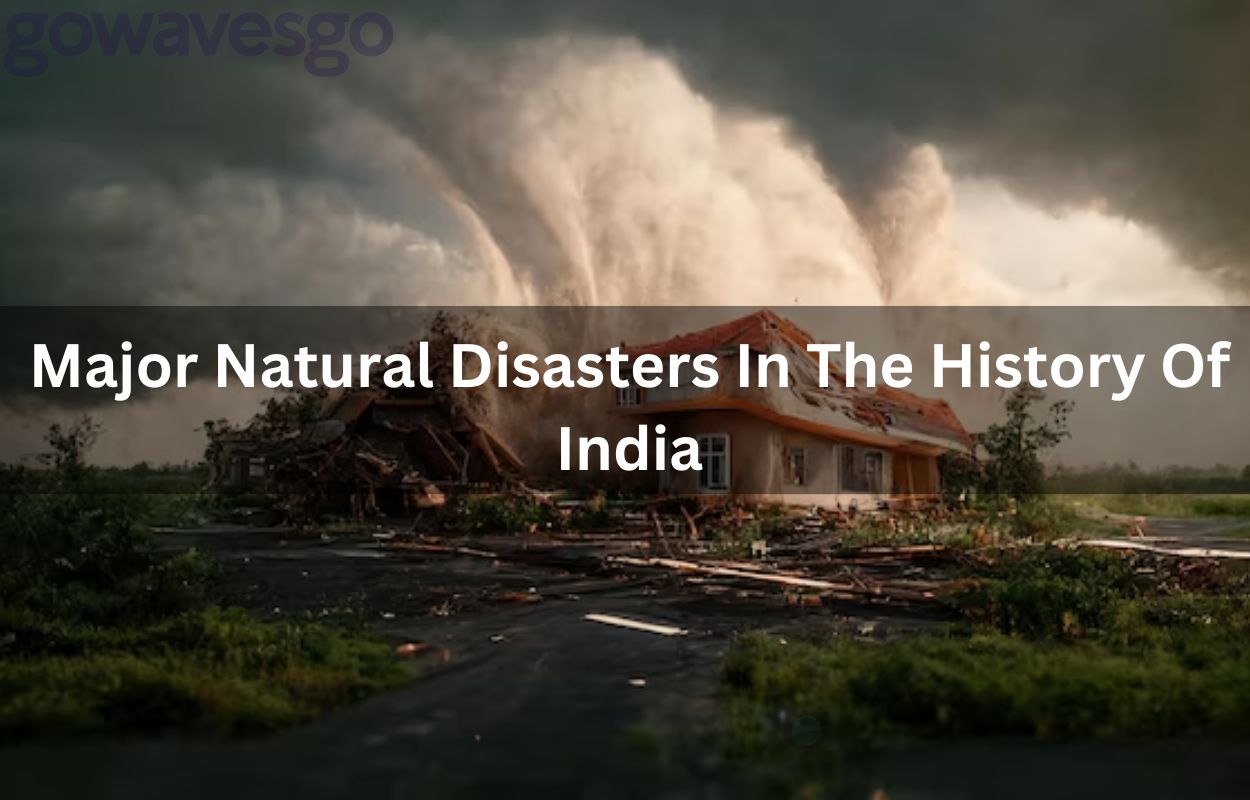
Major Natural Disasters In The History Of India, How Many Deaths Occur In Natural Disasters?
India has experienced many natural disasters such as the Odisha Super Cyclone (1999), the Gujarat Earthquake (2001), and even the Indian Ocean Tsunami (2004). In the following article, we have compiled a list of the 7 most terrifying natural disasters in India’s history. A natural disaster is a natural phenomenon that causes significant property damage and loss of life. Are you eagerly searching to know about the Major Natural Disasters In The History Of India? Here you can get detailed information about the Major Natural Disasters In The History Of India in the following information.
Major Natural Disasters In The History Of India
Natural disasters have a sad history, both in India and elsewhere in the world. Due to ongoing climate change and rising temperatures, the Earth is now more vulnerable to its occurrence. Last year, we experienced many disasters. Let’s take a look at the most devastating natural disasters in India’s history in the following article. Examples of natural disasters: are volcanoes, floods, tsunamis, earthquakes, hurricanes, cyclones, etc. Here get to know the Major Natural Disasters In The History Of India.
- Kashmir Floods disaster
In 2014, the Kashmir Floods disaster affected Rajouri, Srinagar, and Bandipur areas, not only these areas more areas were affected due to this Kashmir Floods disaster. It caused Continuous rainfall and swelling of the Jhelum River.
- Uttarakhand Flash Floods
In 2013, Uttarakhand Flash Floods affected more than 10 districts of the state and four districts were affected worst. Rudraprayag, Uttarkashi, Pithoragarh, and Chamoli, are the districts affected hugely. It caused Heavy rainfall and massive Landslides.
- Bihar flood disaster
In 2007, Bhagalpur, The affected areas were East Champaran, Darbhanga, Patna, Muzaffarpur, Saharsa, Sitamarhi, and Supaul etc. It causes Five times more rainfall than the monthly average of Thirty years.
- The Indian Ocean Tsunami
In 2004, The Indian Ocean Tsunami affected Southern India and Andaman Nicobar Islands, Lakshadweep Island, Indonesia, Sri Lanka, etc. It caused a Tsunami.
- Gujarat Earthquake
In 2001, Gujarat Earthquake affected Kutch, Ahmedabad, Bhuj, Gandhinagar, Surat, Surendranagar, Rajkot, Jamnagar, etc. It caused an Earthquake.
- Super Cyclone, Odisha
In 1999, the Super Cyclone, in Odisha affected The coastal districts of Kendrapara, Bhadrak, Balasore, Kendrapara, Jagatsinghpur, Ganjam Puri, etc. It caused a Cyclone.
- Great Bengal Famine
In 1770, the Great Bengal Famine has affected, Bihar (Tirhut, Champaran, and Bettiah), Odisha, Bangladesh,and West Bengal (Birbhum and Murshidabad). It caused Drought/Famine.
How Many Deaths Occur in Natural Disasters?
Here you can get to know the death counts of the Major Natural Disasters In The History Of India.
Kashmir Floods disaster
- Death Count: Around 550 people
The floods caused a huge loss of life in Kashmir in September 2014. Continuous heavy rains have caused water in the Jhelum River to swell. Thus, the water reached residential areas of Kashmir. Indian troops helped many stranded residents in the area. Approximately 550 people lost their lives and property damage was estimated at 500 million rupees. 5000 cr and 6000 cr.
Uttarakhand Flash Floods
- Death Count: More Than 5,700
The flash floods in Uttarakhand are among the most devastating floods in India’s history. In June 2013, Uttarakhand was hit by heavy rains and massive landslides. Flash floods and landslides continued to occur from June 14th to 17th. Around one lac of pilgrims were trapped in the Kedarnath temple.
Bihar flood disaster
- Death Count: More Than 1000 people
19 districts of Bihar were affected. Floods in Bihar have affected an estimated 10 million people across the state. The floods destroyed approximately 29,000 houses, damaged 44,000 others, and affected approximately 4,822 villages and 1 billion hectares of agricultural land.
The Indian Ocean Tsunami
- Death Count: 2.30 lacks
In total, about 12 countries were affected and more than 2.3 million people died. This tsunami had a magnitude of 9.1 to 9.3 and lasted about 10 minutes. According to the study, this was the third-strongest earthquake ever recorded in the world. The Indian Ocean Tsunami was started on the west coast of Sumatra, Indonesia.
Gujarat Earthquake
- Death Count: Around 20,000
January 26, 2001, was the day India celebrated its 51st Republic Day. A Bachau taluka in Kutch (Gujarat state) suddenly experienced an earthquake of magnitude 7.6 to 7.9 on the Richter scale, which lasted for 120 seconds. The disaster left approximately 20,000 people dead, 167,000 injured, and approximately 400,000 homeless.
Super Cyclone, Odisha
- Death Count: More Than 15,000
The 1999 supercyclone was the most dangerous tropical cyclone in the northern Indian Ocean. His speed was 260km/h. Bangladesh, Myanmar, and Thailand are also the affected areas. It is estimated that approximately 15,000 people were killed, approximately 1.67 million people were left homeless, and more than 2.75 lac homes were destroyed.
Great Bengal Famine
- Death Count: Around 1 crore
Indian Nobel Prize-winning economist Amartya Sen describes the famine as a man-made catastrophe. It was caused by a combination of the British East India Company’s exploitative policies and the weather. This famine began in 1769 due to lack of monsoon and continued for two consecutive seasons until 1773. During the entire period of this famine, approximately 10 million people starved to death.




